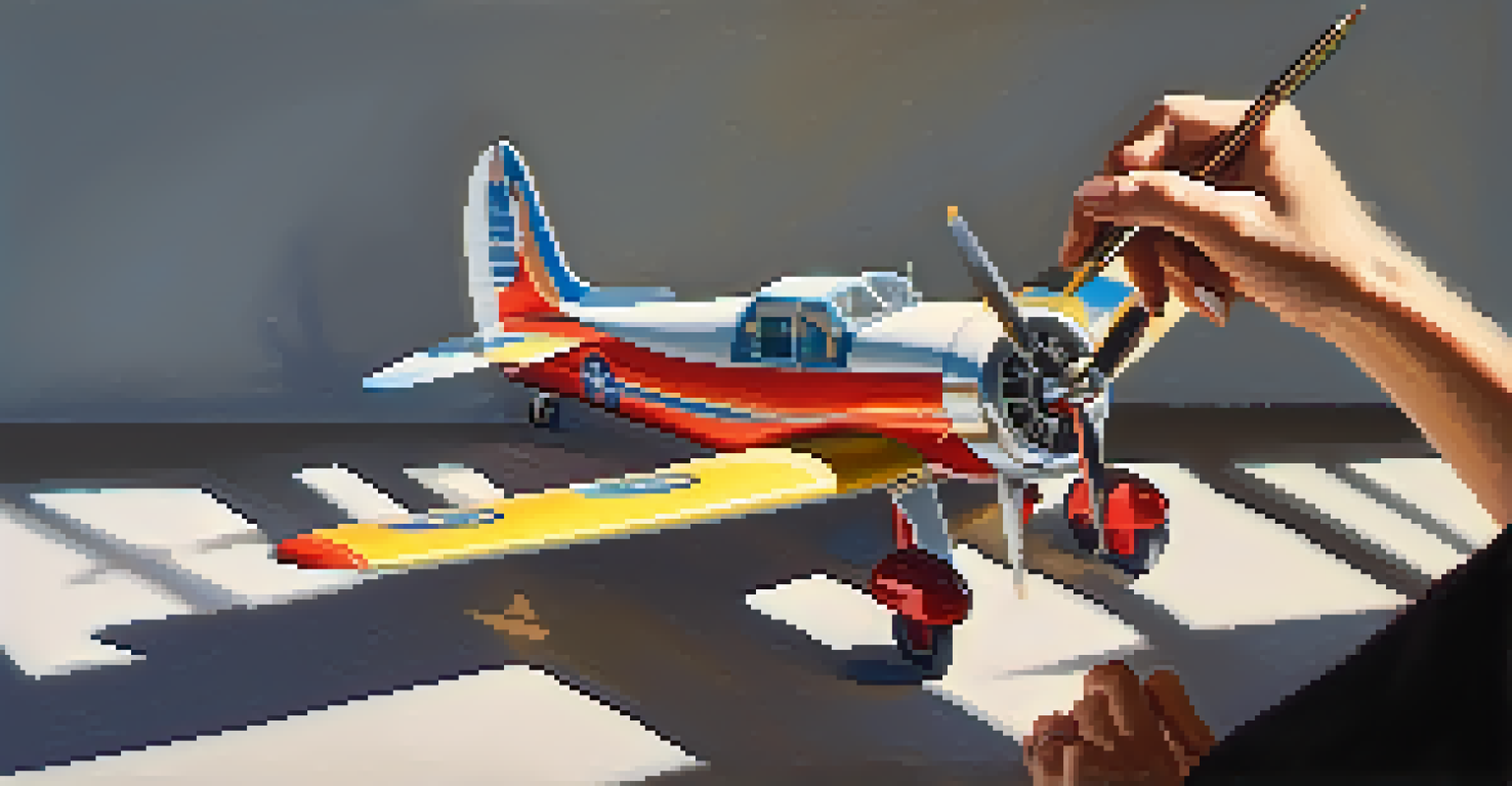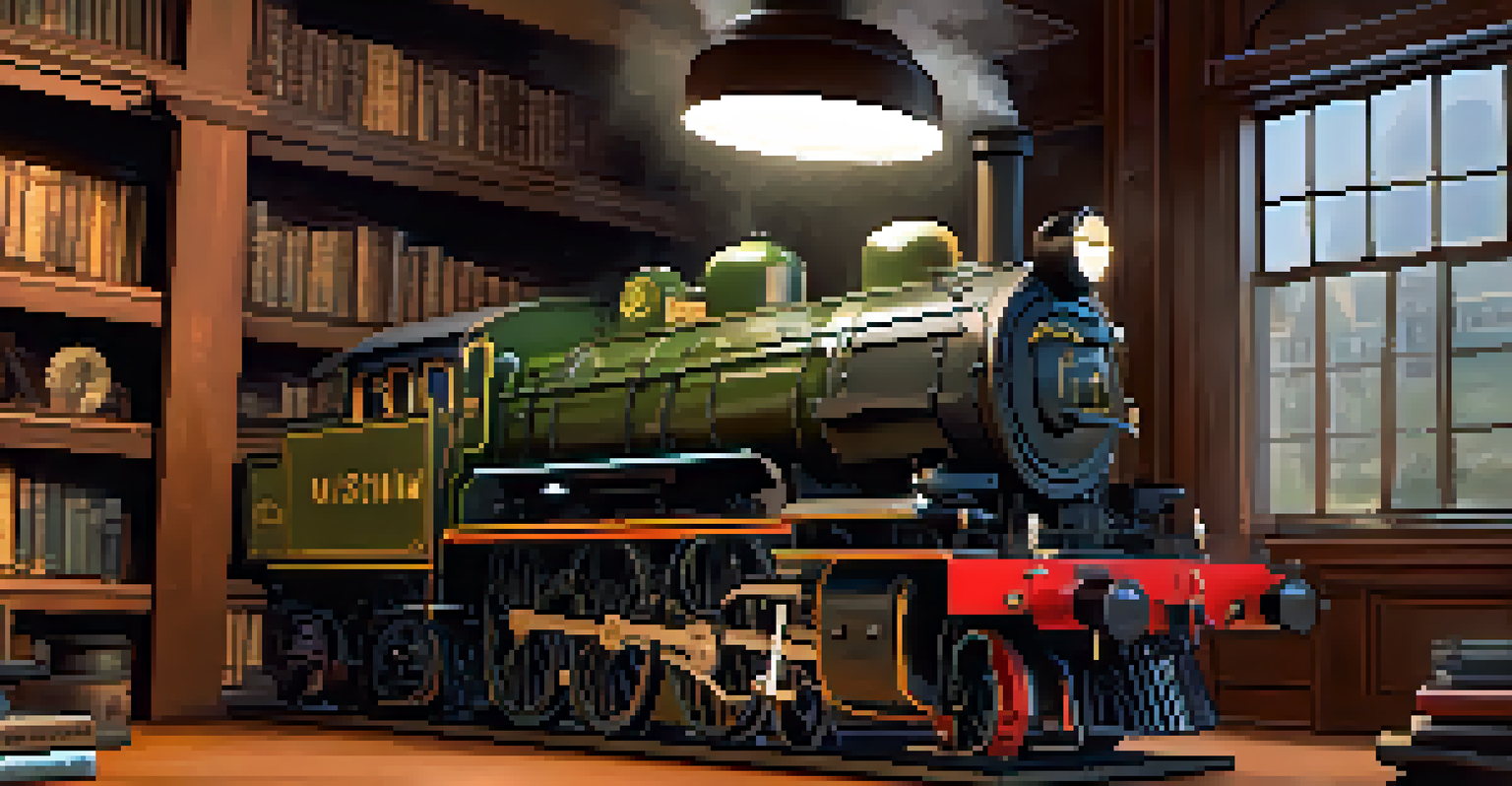Modeling Historical Vehicles: A Guide for Enthusiasts

Understanding the Appeal of Historical Vehicle Modeling
Modeling historical vehicles is more than just a hobby; it's a way to connect with the past. Many enthusiasts find joy in recreating classic cars, trains, and planes, reliving the stories they represent. Each model serves as a tangible piece of history, allowing us to appreciate the craftsmanship of earlier eras.
Modeling isn't just a hobby; it's a way to connect with the past and appreciate the craftsmanship of earlier eras.
The appeal also lies in the challenge. Accurately modeling a vehicle requires attention to detail and a passion for research. Whether it’s the sleek lines of a vintage car or the intricate machinery of a steam locomotive, the satisfaction of crafting a faithful replica can be quite rewarding.
Moreover, modeling can foster a sense of community. Many enthusiasts join clubs or online forums where they can share tips, showcase their work, and connect with like-minded individuals. This camaraderie enhances the experience, making it more enriching and enjoyable.
Choosing the Right Historical Vehicle to Model
Selecting a vehicle to model is a critical first step. Consider what fascinates you—this could be a classic car, a WWII aircraft, or even an iconic train. The vehicle’s history and significance can greatly enhance your modeling experience, as it often comes with its own stories and legacy.

Another factor to consider is the availability of reference materials. Look for books, documentaries, and online resources that provide detailed information about the vehicle. Good references will be invaluable in helping you accurately depict features and colors.
Connect with History Through Modeling
Modeling historical vehicles provides a unique way to engage with the past and appreciate the craftsmanship of earlier eras.
Lastly, take into account your skill level and available resources. Some models may require advanced techniques, while others are more beginner-friendly. Choosing a vehicle that aligns with your abilities can help prevent frustration and ensure a more enjoyable modeling journey.
Gathering Essential Tools and Materials
Before diving into your modeling project, it’s crucial to gather the right tools and materials. Basic supplies include a cutting mat, hobby knife, tweezers, and various adhesives. Investing in quality tools can make a significant difference in the precision and enjoyment of your work.
The journey of building a model is as rewarding as the finished product; each step teaches us something new.
In addition to tools, consider the materials you’ll be using. Plastic kits are popular, but you might also explore wood, metal, or resin options. Each material has its own set of challenges and rewards, so choose one that matches your comfort level and desired outcome.
Don’t forget about paints and finishes! High-quality paints can bring your model to life, while weathering techniques can add realism. Experimenting with different finishes can be a fun way to develop your skills and personalize your model.
Researching Your Chosen Vehicle Thoroughly
Once you’ve chosen your vehicle, deep research is key. Start by gathering images from multiple angles, including close-ups of details that interest you. Historical photos can provide insight into the original design and color schemes, which is essential for authenticity.
Consider visiting museums or historical shows where you can see the real vehicles up close. If possible, talk to owners or historians who can provide additional context or anecdotes about the vehicle’s significance. This firsthand knowledge can greatly enrich your modeling project.
Research is Key to Success
Thorough research on your chosen vehicle, including gathering reference materials and engaging with communities, enhances the modeling experience.
Online forums and groups can also be valuable resources. Engaging with other enthusiasts can introduce you to new techniques, tips, and even parts suppliers, making your research more comprehensive and enjoyable.
Creating a Work Plan for Your Model
Having a structured work plan can streamline your modeling process and keep you organized. Start by breaking down the project into manageable phases, such as assembly, painting, and detailing. This approach helps prevent feeling overwhelmed and allows you to focus on one step at a time.
Set realistic timelines for each phase based on your availability and skill level. Remember, modeling is meant to be enjoyable, so don’t rush through it. Allowing yourself ample time to explore and experiment can lead to unexpected discoveries and improvements.
Lastly, document your process. Take photos or keep notes about what worked well and what didn’t. This reflection can be helpful for future projects and allows you to track your progress as you become more skilled.
Techniques for Assembling Your Historical Model
Assembling your model is where your research and planning come together. Start with the basic structure, ensuring all parts fit together snugly before applying any glue. Patience is key; taking your time during assembly can save you headaches later on.
Utilize clamps and supports to hold pieces in place while the adhesive cures. This step can be especially helpful for larger models, where gravity may work against you. Don’t hesitate to refer back to your research for guidance on specific assembly details.
Patience in Assembly and Detailing
Taking your time during assembly and painting allows for better precision and creativity, leading to a more rewarding final product.
If you encounter difficulties, remember that learning from mistakes is part of the process. Many seasoned modelers have faced challenges, and sharing these experiences can foster a supportive community where everyone grows together.
Painting and Detailing: Bringing Your Model to Life
Once your model is assembled, the painting and detailing phase begins. This is where you can truly express your creativity and bring your historical vehicle to life. Start with a primer coat to ensure the paint adheres well and provides a smooth surface.
Use fine brushes or airbrush techniques for precision work, especially when addressing intricate details. Layering paints can create depth and highlight features, so don’t hesitate to experiment with color combinations and shading techniques.

Finally, consider adding weathering effects to add realism. Techniques like dry brushing or applying washes can mimic dirt or wear over time, giving your model a more authentic appearance. This step can be incredibly satisfying as you see your hard work come to fruition.